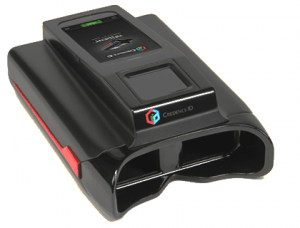
The Trident handheld reader is helping to biometrically identify victims of the recent AirAsia tragedy. AirAsia Flight QZ8501 went missing on December 28, 2014, enroute from Surabaya, Indonesia, to Singapore.
The fight was found shortly after, having crashed into the waters south of Borneo and killed all 162 passengers.
In the effort to identify the fallen victims of this latest major airline disaster, Indonesia’s Automatic Fingerprint Identification System (INAFIS) has been employed with the various Disaster Victim Identification teams.
Using a number of technologies including the Trident handheld reader from Credence ID —which is using the Mobile Automatic Multi-Biometric Identification System (MAMBIS)— the disaster response teams are hoping to match the victims’ traits with photos, names, and addresses.
According to law enforcement officials from Indonesia, MAMBIS can produce 100 percent matches on victims whose fingerprints have not been damaged, while offering 60 percent accuracy with damaged samples.
Over 50 percent of the AirAsia victims have been identified using the Trident device, bringing peace of mind to the mourning families affected by the disaster.
Those victims who require other methods of identification, such as X-Ray or DNA matching, will take a significantly longer time to positively match to records.
Underneath the tragedy and ensuing investigation efforts related to the AirAsia crash is the thankful fact that Indonesia benefits from an extremely comprehensive national ID database that includes the biographic and biometric data of nearly every one of the country’s 250 million plus citizens.
A national registry, in tragic times like this, is helping identify bodies at a very fast pace thanks to mobile biometric readers like the Trident.
Source: mobileidworld.com
